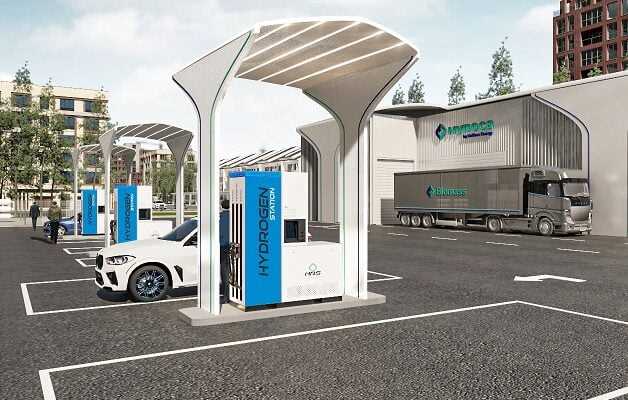Hydrogen is a hot topic and companies in the sector are taking advantage of this to go public. For a long time, the pioneer McPhy Energy, which arrived on the market in 2014, remained alone. The title had also vegetated before taking off spectacularly in 2020 to the point of integrating the SBF 120 index. Since its peak at the start of 2021, it has lost half of its value. But the promotion of the action and the political will to develop hydrogen have given rise to vocations. Last year, McPhy Energy was joined on the stock exchange by Hydrogen Refueling Solutions (HRS), specialist in charging stations, then Hydrogène de France (HDF), designer of fuel cells and renewable electricity storage stations under form of hydrogen.
Haffner Energy, which has just launched its IPO (subscriptions will end on February 9 and the price range is 8-9.50 euros per share), operates on the same market as McPhy, that of the production of decarbonated hydrogen, but with a totally different process. While McPhy manufactures electrolysers (water electrolysis), Haffner has developed a technology, called “Hynoca”, which makes it possible to obtain gas by thermolysis of biomass (wood, agricultural by-products, etc.), a raw material plentiful and cheap, at 500 degrees. The process is protected by 80 patents. First, hypergas, a renewable gas that has the same uses as natural gas, is produced. After purification, it makes it possible to obtain hydrogen. “The advantage of Hynoca is both economic and climatic”, explains Philippe Haffner, CEO and co-founder of the company with his brother some thirty years ago.
Competitive costs
The cost of producing hydrogen is already comparable to that of “grey” hydrogen produced from natural gas. Which is not the case today, with some exceptions, when it is obtained by electrolysis of water. Furthermore, gas production is not subject to the vagaries of the weather, whereas electrolysis uses renewable and therefore intermittent energies. From a climatic point of view, the Hynoca process makes a positive contribution because Haffner’s hydrogen production system generates a co-product, biochar, a carbon of vegetable origin used in agriculture to increase the quality of the soil which acts as a carbon sink. Thus for 1 kg of hydrogen produced, 5.5 kg of biochar are obtained, corresponding to the sequestration of 12 kg of Co2.
A first unit is being deployed in Strasbourg. Powered by wood chips, it aims for a daily production of 720 kilos of hydrogen (the consumption of around 72 buses for example) and 4 tonnes of biochar. It will be fully operational in early 2023. At the end of December, the order book stood at 33 million and the company estimates that its “pipeline” exceeds 180 million. Haffner’s technology has, for example, been selected by the Portuguese company GreenVolt for a large-scale project to collect and use biomass to convert a power plant that until now has been running on coal. The targeted production capacity is 20 tonnes of hydrogen per day.
250 million sales by 2025-2026
In terms of activity and results, the stated objectives are very ambitious. For the 2022-2023 financial year which will end on March 31, the company expects more than 30 million in turnover, then 75 million the following year and 250 million in 2025-2026. In terms of profitability, it aims to generate a positive gross operating surplus (Ebitda) as of March 31, 2024. In the long term, an Ebitda margin of more than 25% is targeted. The 73 million collected during the IPO must mainly finance the industrial and commercial development of the group. Even if the manufacture of the components will remain subcontracted, Haffner wishes to group together in the factory which will build the assembly, the quality control and the logistics with more than 350 hires in the key. On the commercial level, the recruitment of a hundred employees is planned, the company wanting to attack the European markets but also North America and South-East Asia, the design of Hynoca in the form of modules having the size of a container facilitating transport.
Like a large number of IPOs today, the operation is pre-placed to the tune of 13 million euros with financial investors, Handelsbanken AM and Mirova, and 24 million with three industrial partners, HRS, which wishes develop joint offers with Haffner, the cement manufacturer Vicat and Eren Groupe, which will create a joint venture with Haffner to develop hydrogen production plants. The quality of these partnerships is reassuring as to the solidity of the project developed by Haffner Energy: Pâris Mouratoglou and David Corchia, the directors of Eren Groupe, are references in the world of renewable energies. They were at the origin of the development of EDF Energies Nouvelles, then of Total Eren.
